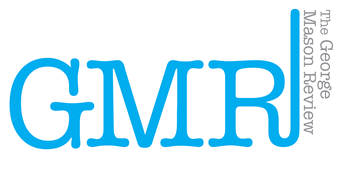By: Mikal Lambdin
Mikal is a senior studying English at George Mason. She previously worked with WAC to create disciplinary writing guides for student use. To reach her, please contact wac@gmu.edu.
Last month, I was excited to learn that my essay, “Someone Who Cares a Whole Awful Lot: The Rhetoric of Dr. Seuss’s Political Parable,” won the award for Best Submission in The George Mason Review, GMU’s student-run journal of exemplary undergraduate scholarly works. Like any writer, I have faced the overwhelming task of trying to be published, a feat that is at best elusive and at worst seems impossible. But when I got the news about my success through GMR, I began to reflect on how publishing my work is different from trying to publish other texts or writing for classes. Throughout the entire process – the writing of my essay, its submission to the journal, and its ultimate acceptance – I learned some valuable lessons about what it means to “re-vision” scholarship, and the significance of a journal like GMR as a starting place for students to think about how to write for readers other than their teachers.
I wrote the essay that was recognized by GMR as the final assignment for ENGH 386, a course entitled Editing for Audience, Voice and Style. The essay was a culmination of everything I had learned in the course, specifically my newfound knowledge of the importance of scope. Professor Steven Corbett repeatedly emphasized the value of a narrow scope, teaching us that the more focused our papers, the more in-depth – rather than topical – our analysis would be. I had never been given such intensive instruction on scope before, and it proved quite valuable. My goal for the essay, which rhetorically examines two hallmarks of Dr. Seuss’s political parables, was to have as focused a scope as possible.
Before submitting the piece to GMR, I hadn’t even heard of the phrase “re-vision scholarship,” the journal’s motto. When I read their mission statement, which emphasized “exploring and challenging the boundaries separating disciplines from each other” – re-envisioning the scope, purpose, and audiences for scholarly writing– I realized that this mission meshed well with my own in this essay (GMR). While other students in the Writing and Rhetoric concentration often write about the rhetorical theories they are learning, I decided to take a risk and discuss children’s literature and politics through the lens of rhetoric. This risk allowed me to view the scholarship of rhetoric and writing from a new vantage point, especially as I began to imagine a scholarly audience for the piece.
I first heard about GMR through an announcement in my ENGH 386 class, and I was intrigued by the idea of a student-run journal that is publishes students’ scholarly work. I already knew about the newest poetry or fiction contests, so I jumped at the chance to have my rhetorical analysis essays recognized. The submission process was simple: I uploaded two essays with a short introduction for each, and explained why I thought that they re-visioned scholarship and how they matched the GMR mission. After the GMR Editor-in-Chief, Namita Paul, emailed me to confirm that one of my essays was accepted, I was given the chance to revise my work through a Google Document. The whole process ended with an embarrassing display in class, when Professor Corbett decided to brag on my behalf.
While for many students publishing a piece in the GMR may just be the beginning, it is an incredibly important publication for that very reason. GMR is run almost exclusively by Mason students, giving it a “for the people, by the people” type of accessibility. Their goal, which is to “represent the academic excellence of the Mason undergraduate body,” is particularly meaningful due to the fact that the GMR staff has a valuable understanding of the undergraduate body they aim to represent. Ultimately, because the GMR is student run, it is a wonderful starting place for undergraduates interested in publishing their work. The enormous leap from the predicable college world to the unpredictable real-world audience is a difficult transition for students, but it is all the more powerful as students use it as a kind of stepping stone – a place to begin writing for audiences of their peers. It provides students with the opportunity to gain that first publication, a first that will hopefully lead to increased success as writers and that will ultimately be a valuable part of a student’s journey from an academic context to a professional one.
I learned a great deal through both the writing of my essay, as well as its submission and acceptance to GMR. In addition to the valuable lessons I gained on the importance of scope and the power of re-visioning scholarship, I also learned that audience is everything. Although my essay is an in-depth rhetorical analysis, in order for it to succeed as a piece in GMR, I had to make it accessible to undergraduates of every major. Writing an essay with GMR in mind gave me the opportunity to tailor my work to a specific audience. Finally, GMR has played a valuable part in my development as an author by giving me a starting place for publication. I encourage professors to incorporate GMR when teaching their own students by assigning essays with GMR’s audience as the intended reader, offering extra credit for class work submitted to GMR, or simply making an announcement in class about the journal’s benefits. By discussing and even using essays from GMR in classes, students can learn to write to a varied audience, try to step outside the box and re-vision their scholarship, and may have an opportunity to publish for the first time.
To find out more about GMR, visit their website here: http://gmreview.gmu.edu/. Other opportunities for undergraduate publication are listed on the Council of Undergraduate Research.
Works Cited
The George Mason Review. George Mason University, n.d. Web. 4 Apr. 2015.

